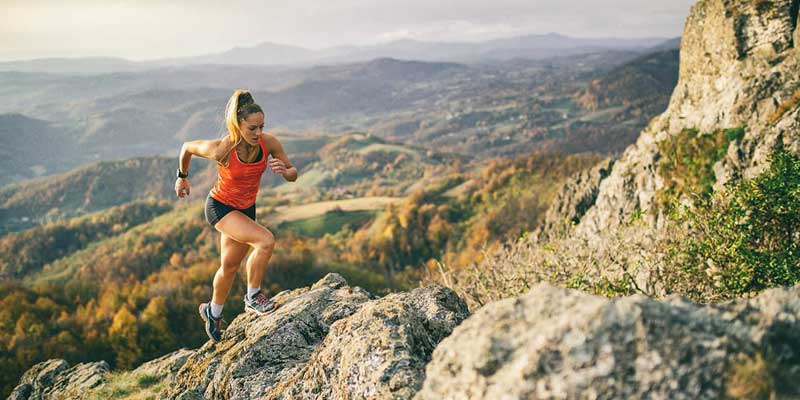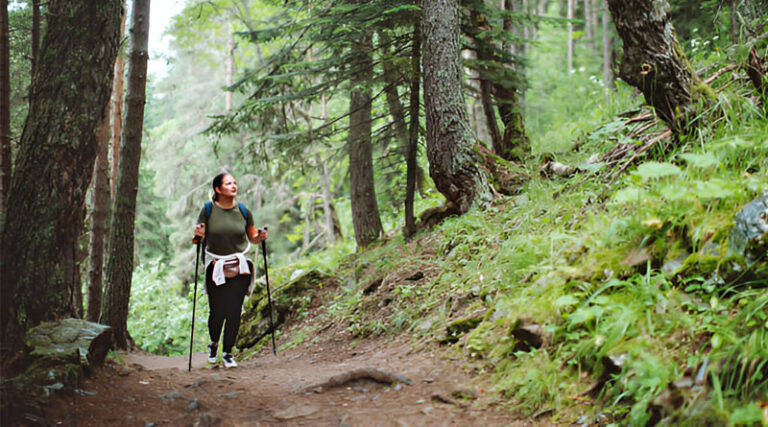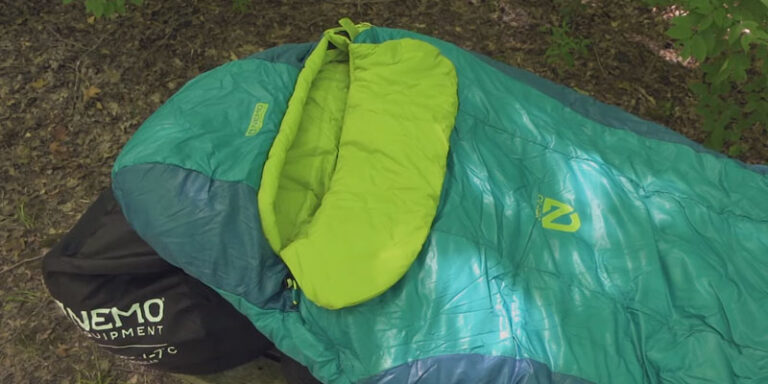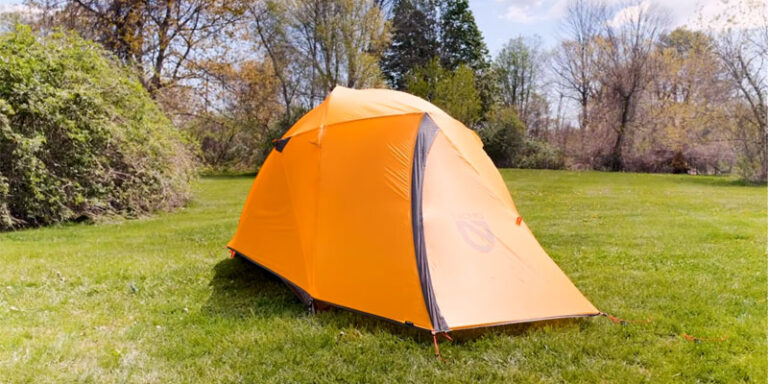Most trail runners wear shoes when they run and the type of shoes you choose can help protect you from the forces of running. Now, if you have higher arches in general, your feet are more stable and more rigid. A rigid foot type generally translates to higher peak forces when you run. Cushioning type trail runners can help protect your feet from the pounding forces of running. If you have high arches, your feet are prone to problems like shin splints, plantar fasciitis, or even stress fractures.
So these are the top trail running shoes with good arch support for men and women.
1. Hoka Speedgoat 6
Category: Rugged-Trail
Weight (Pair): 1 lb. 3.6 oz.
Cushioning: Maximum
Drop: 5mm
The Hoka Speedgoat 6 is a fantastic update to an already popular trail-running shoe. It keeps the well-loved cushioning but improves weight and grip. The midsole is thick and soft, absorbing impact and keeping your feet comfortable on long runs. At the same time, the lighter material makes the shoe feel more responsive. The upper is breathable and fits securely with an internal support chassis that hugs the foot. The gusseted tongue adds comfort, preventing debris from getting inside. A protective toe bumper helps keep your toes safe from rocks and roots. Whether you are running short distances or tackling ultra-long trails, the Speedgoat 6 offers a balanced mix of comfort, protection, and performance.
One of the standout features is the outsole, which has been upgraded for even better traction. The Vibram Megagrip compound, combined with 5mm lugs, grips well on various surfaces. Whether running on dry dirt, slick mud, or steep rock, the shoe provides confidence-inspiring stability. The revised lug orientation, inspired by a goat’s hoof, helps improve grip on technical terrain. Despite the aggressive traction, the outsole remains lightweight and doesn’t feel bulky. The toe box is medium-width, allowing a comfortable fit for many foot shapes. With these improvements, the Speedgoat 6 remains a top choice for trail runners who want cushioning, grip, and durability in one package.
What I like: A lightweight shoe with exceptional comfort and grip.
What I don’t: Thick midsole reduces trail feel in technical sections.
See the Hoka Speedgoat 6 See the Women’s Speedgoat 6
2. Brooks Divide 5
Category: Light-Trail
Weight (Pair): 1 lb. 2 oz.
Cushioning: Moderate
Drop: 8mm
The Brooks Divide 5 is a cheap trail runner for people with high arches. It’s a great option for mixed terrain because it blends road-running comfort with trail-ready protection. The breathable mesh upper keeps feet cool and dries quickly after water crossings. A snug midfoot fit, thanks to the tongue gusset, adds stability. TPU toe caps and mudguards protect against rocks and debris. The DNA LOFT v2 cushioning is softer and 10% lighter than before, offering a smooth ride. With a 4 mm increase in stack height, the shoe feels even more cushioned. The aggressive 3.5 mm lugs give solid traction on dirt, gravel, and wet surfaces. The TrailTack Green rubber outsole, made with 25% recycled materials, provides a reliable grip.
This shoe performs well on both roads and trails but shines most on rugged terrain. It grips steep slopes and slick rocks, making descents and stream crossings easier. The soft cushioning feels comfortable, while the rigid toe and heel guards add protection. It offers decent ankle support without feeling bulky. The Divide 5 is also breathable, making it perfect for warm weather. Even after getting soaked, it dries quickly. With an affordable price and dependable performance, it’s a great choice for beginners and experienced runners alike. Whether for daily trail runs or an extra pair in your rotation, this shoe delivers.
What I like: Comfortable, affordable, and breathable
What I don’t: Not recommended for super technical trails.
See the Brooks Divide 5 See the Women’s Divide 5
3. Salomon Sense Ride 5
Category: Rugged-Trail
Weight (Pair): 1 lb. 4.2 oz.
Cushioning: Moderate
Drop: 8mm
The Salomon Sense Ride 5 is a great all-around trail running shoe. It works well for both short runs and long distances. The engineered mesh upper is lightweight, flexible, and durable. Sensifit™ technology helps create a snug and comfortable fit. The Quicklace™ system makes it easy to tighten the shoe with one pull. This means you can get them on and off quickly. The Energy Save midsole provides a nice mix of cushioning and responsiveness. It absorbs impact while still giving a lively feel. The shoe has a balanced 8mm drop, which suits many runners. It also has a roomy toe box, allowing toes to spread naturally. These features make it a solid choice for many trail runners.
The Contagrip® outsole gives reliable traction on different surfaces. Whether on dry dirt, rocky paths, or wet trails, the grip remains strong. This makes it a great option for technical terrain. The shoe performs well in long races too. One runner switched to the Sense Ride 5 after 45 miles in a 100-mile race. Despite earlier blisters from another shoe, they finished the race comfortably. The Sense Ride 5 may not have flashy looks, but it delivers where it matters. It provides comfort, durability, and performance on any trail. This shoe is a reliable choice for runners who want versatility and comfort.
What I like: A versatile shoe for everything from daily training to mountain running.
What I don’t: Not a top performer in any one category.
See the Salomon Sense Ride 5 See the Women’s Sense Ride 5
4. Altra Lone Peak 9
Category: Rugged-Trail
Weight (Pair): 1 lb. 6.4 oz.
Cushioning: Moderate
Drop: 0mm
The Altra Lone Peak 9 is a solid choice for trail runners and hikers. It is lightweight, durable, and has good arch support. The shoe features an updated MaxTrac™ outsole, which offers better grip and lasts longer on rough terrain. The Altra EGO™ midsole foam provides a soft feel while keeping you connected to the ground. Its no-sew overlays and ripstop mesh uppers add to its durability, making it great for long distances. The roomy FootShape™ fit gives your toes space, reducing pressure and discomfort. It also has a Stoneguard™ insert, which protects your feet from sharp rocks and debris. A GaiterTrap™ tab lets you attach gaiters to keep out dirt and small stones. With a zero-drop design, the shoe promotes a natural foot position, offering a stable and confident feel on trails.
For runners who struggle with blisters, pressure points, or tight shoes, the Lone Peak 9 is a game-changer. Inspired by the barefoot running movement, its flat footbed and wide toe box allow your feet to spread naturally. This design is especially helpful for those with wide feet or sensitive toes. Many runners who find traditional trail shoes uncomfortable, even in wide sizes, have loved this model. It provides a balance of comfort and performance that is hard to match. If you want a reliable and ergonomic trail runner, this shoe is a great pick.
What I like: Lightweight comfort with natural foot positioning.
What I don’t: Sluggish, slipper-like feel; too roomy for some.
See the Altra Lone Peak 9 See the Women’s Lone Peak 9
5. Salomon Speedcross 6
Category: Rugged-Trail
Weight (Pair): 1 lb. 5 oz.
Cushioning: Moderate
Drop: 10mm
The Salomon Speedcross 6 is a powerful and reliable trail-running shoe. It keeps your feet steady with a strong grip on various surfaces. This updated version is lighter than before and features improved uppers for better comfort. The shoe’s deep, sharp lugs provide exceptional traction on loose and muddy ground. Mud Contagrip® outsoles quickly shed dirt, helping you stay in control. The welded upper hugs your foot for a secure fit. SensiFit™ construction adds to the precision, ensuring optimal foothold. The Quicklace™ system makes it easy to tighten or loosen with one pull. This allows for quick adjustments while on the move. EnergyCell™+ midsoles offer excellent cushioning and energy return. This makes long runs more comfortable and reduces the impact on your legs. Recycled materials in the shoe’s design add an eco-friendly touch.
The Speedcross 6 excels on rugged trails, wet terrain, and soft surfaces. The 5-millimeter arrow-shaped lugs bite into the ground, preventing slips. Compared to cushioned shoes like the Hoka Speedgoat, it performs better in deep mud and snow. The sturdy chassis offers support without feeling too heavy. The snug fit helps with stability, especially when running fast. The shoe’s strong rubber outsole gives a better grip than mixed-material alternatives. It works well on sand, wet leaves, and uneven trails. With its combination of grip, durability, and comfort, the Speedcross 6 is a top choice for serious trail runners.
What I like: Truly excellent traction on soft ground.
What I don’t: Not versatile for easy trails or most mountain running.
See the Salomon Speedcross 6 See the Women’s Speedcross 6
6. Hoka Torrent 4
Category: Light-Trail
Weight (Pair): 1 lb. 3.6 oz.
Cushioning: Moderate
Drop: 5mm
The Hoka Torrent 4 is a trail-running shoe built for speed, agility, and comfort. It has a lower profile than most Hokas, offering a better ground feel. The breathable single-layer mesh upper keeps feet cool and light. A molded puff collar and hot-melt support cages add structure without extra weight. The lay-flat gusseted tongue stays in place, reducing friction and irritation. The shoe also has 3D-printed rands for extra durability. The midsole is softer, lighter, and more responsive than before, giving a bouncy ride. An extra-plush sockliner adds even more comfort for long runs. The early-stage MetaRocker™ helps smooth out transitions, making each step feel natural. The rear foot-focused Active Foot Frame™ secures the foot for better stability on uneven ground.
The outsole of the Torrent 4 is built for durability and grip. The rubber wrap-up design strengthens key areas to handle rough trails. The 5 mm high-abrasion lugs provide an aggressive bite on dirt, rocks, and wet surfaces. This is an upgrade from the previous model’s 4 mm lugs, improving traction. Hoka’s sticky rubber sole ensures a solid grip, even on tricky terrain. The shoe is lightweight yet cushioned, making it great for race days and fast workouts. Testers have logged over 300 miles in the previous version and praised its balance of comfort and control. The Torrent 4 seems set to deliver even better performance.
What I like: The plushness of a Hoka yet responsive and nimble; great grip.
What I don’t: Lacks the locked-in feel of most minimalist race shoes.
See the Hoka Torrent 4 See the Women’s Torrent 4
7. La Sportiva Bushido III
Category: Rugged-Trail
Weight (Pair): 1 lb. 5 oz.
Cushioning: Moderate
Drop: 6mm
The La Sportiva Bushido III is built for tackling technical terrain with confidence. The shoe offers a snug and secure fit without creating pressure points. Its slip-on construction wraps the foot like a sock, ensuring stability on uneven ground. The air-mesh upper improves breathability, while ripstop overlays add durability. New side panels allow for even better ventilation during long runs. The compression-molded MEMlex midsole provides moderate cushioning, making it firm but responsive. A 1.5mm dual-density EVA rock guard protects against sharp rocks and debris. The outsole lugs extend onto the midsole, increasing traction and grip on steep slopes. La Sportiva’s FriXion® Red bi-compound outsoles give maximum grip on varied surfaces. This makes the Bushido III a great choice for rugged mountain trails. However, it is recommended to size up a half size for the best fit.
Compared to the Salomon Speedcross 6, the Bushido III is more versatile for different terrains. It has a lower stack height (19mm at the heel), giving better stability and ground feel. This makes it ideal for technical routes in the Cascades, the Sierra, and Colorado. However, the firmer midsole feels less cushioned than shoes like the Hoka Speedgoat or Salomon Sense Ride 5. On smooth trails, the aggressive design might feel excessive. But when running on rough, rocky terrain, the Bushido III shines. It offers precision, grip, and durability for serious mountain runners.
What I like: A superb technical shoe with awesome traction.
What I don’t: Too much grip and not enough cushion for high-mileage outings and daily training.
See the La Sportiva Bushido III See the Women’s Bushido III
8. Brooks Cascadia 18
Category: Rugged-Trail
Weight (Pair): 1 lb. 7.3 oz.
Cushioning: Moderate
Drop: 8mm
The Brooks Cascadia 18 is a solid choice for trail runners and hikers. It offers stability and protection on rugged terrain. The breathable mesh upper keeps your feet cool and dries quickly. Overlays in high-wear areas add extra durability. TPU toe caps and mudguards help block debris on the trail. The DNA LOFT v2 midsole provides soft cushioning for comfort on long runs. The Ballistic Rock Shield protects your feet without limiting flexibility. Brooks designed the shoe with sustainability in mind, using recycled materials. The PrintDyed uppers save energy and water during production.
The Cascadia 18 grips well on both wet and dry surfaces. Its TrailTack Green outsole includes 25% recycled material. The 4.5 mm lugs provide solid traction on tricky trails. The Trail Adapt System improves control and stability on uneven ground. This shoe has a roomy toe box for added comfort. It also works well with gaiters for extra protection. The Cascadia is a reliable workhorse for long adventures. It suits ultrarunners, thru-hikers, and everyday joggers. The shoe balances comfort, durability, and grip. It keeps your feet feeling fresh on long outings. If you want a dependable trail shoe, the Cascadia 18 is a great option.
What I like: A wonderfully comfortable and protective shoe for technical terrain.
What I don’t: A bit too stiff and heavy to be a daily trainer.
See the Brooks Cascadia 18 See the Women’s Cascadia 18
Best Trail Runners for High Arches: Comparison Table
| Shoe | Category | Weight (Pair) | Cushioning | Drop |
|---|---|---|---|---|
| Hoka Speedgoat 6 | Rugged-Trail | 1 lb. 3.6 oz. | Maximum | 5mm |
| Brooks Divide 5 | Light-Trail | 1 lb. 2 oz. | Moderate | 8mm |
| Salomon Sense Ride 5 | Rugged-Trail | 1 lb. 4.2 oz. | Moderate | 8mm |
| Altra Lone Peak 9 | Rugged-Trail | 1 lb. 6.4 oz. | Moderate | 0mm |
| Salomon Speedcross 6 | Rugged-Trail | 1 lb. 5 oz. | Moderate | 10mm |
| Hoka Torrent 4 | Light-Trail | 1 lb. 3.6 oz. | Moderate | 5mm |
| La Sportiva Bushido III | Rugged-Trail | 1 lb. 5 oz. | Moderate | 6mm |
| Brooks Cascadia 18 | Rugged-Trail | 1 lb. 7.3 oz. | Moderate | 8mm |
How to Choose Trail Running Shoes?
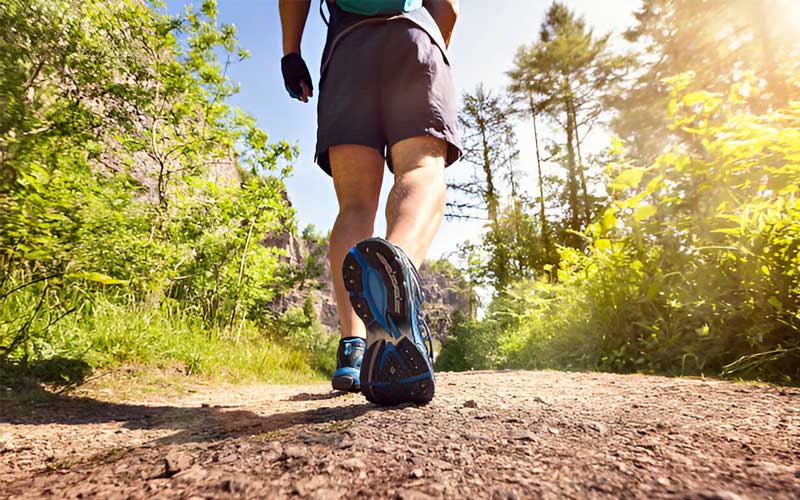
Trail running is a fun and challenging activity. The right shoes can make all the difference. Choosing the best pair depends on many factors. You need to consider the terrain, fit, and comfort. A good pair of trail running shoes will protect your feet and improve performance. Here’s a simple guide to help you choose the perfect pair.
Understand Your Terrain
Different trails require different types of shoes. Some are rocky, while others are muddy or smooth. If you run on soft, muddy trails, choose shoes with deep lugs. These provide better grip and prevent slipping. For rocky or uneven trails, pick shoes with good cushioning and a tough sole. These will protect your feet from sharp rocks. If your trails are dry and compact, lighter shoes with moderate grip will work well.
Get the Right Fit
The fit of your shoes is crucial. Your toes should not touch the front of the shoe. There should be some space for movement. This prevents black toenails and blisters. The heel should feel snug but not tight. A loose heel can cause friction and blisters. Try on shoes with the socks you plan to wear. This helps you get the most accurate fit. Always test your shoes by walking or running a little before buying.
Consider Cushioning and Support
Cushioning affects comfort and impact absorption. Some runners prefer more cushioning for extra comfort. Others like minimal cushioning for a better ground feel. If you run long distances, more cushioning can reduce fatigue. If you run short and fast, lighter shoes with less cushioning may work better.
Arch Support Matters
Arch support is important for comfort and injury prevention. If you have flat feet, choose shoes with extra stability and support. This helps prevent overpronation, which can lead to pain and injuries. If you have high arches, flexible shoes with good cushioning will be more comfortable. Neutral runners can choose shoes with moderate support. Knowing your arch type can help you pick the right shoes for your needs.
Check for Durability
Trail shoes take a lot of beating. They must be durable to handle rough conditions. Look for strong materials and reinforced toe caps. These protect your feet from rocks and roots. The outsole should be tough and resistant to wear. If you run often, a durable pair will last longer and save you money.
Think About Breathability and Waterproofing
Breathability keeps your feet cool and dry. Shoes with mesh uppers allow air to flow. This prevents sweating and reduces the risk of blisters. However, if you run in wet conditions, waterproof shoes might be better. These keep your feet dry but may be less breathable. Consider the weather and your running conditions before deciding.
Lug Pattern and Traction
Lug patterns affect grip. Deeper lugs offer better traction on muddy and slippery trails. Shallow lugs are better for dry and rocky trails. Some shoes have sticky rubber soles for extra grip on wet surfaces. Make sure the shoe provides the right traction for your usual running terrain.
Weight of the Shoe
Lighter shoes help you run faster with less effort. But they may lack durability and support. Heavier shoes offer more protection but can slow you down. Find a balance between weight and protection based on your needs. If speed is your priority, go for a lightweight shoe. If safety and support matter more, a sturdier shoe is better.
Heel-to-Toe Drop
Heel-to-toe drop is the difference in height between the heel and the forefoot. A higher drop (8-12mm) provides more heel cushioning. This suits runners who land on their heels. A lower drop (0-4mm) promotes a natural running style. It is better for runners who land on their midfoot or forefoot. Choose a drop that matches your running style to avoid discomfort or injuries.
Try Before You Buy
Always try on shoes before buying. Walk or run around the store to test comfort and fit. Your feet swell during a run, so try shoes in the evening when your feet are bigger. If you buy online, check the return policy. This ensures you can return or exchange them if they don’t fit well.
Break Them In
New shoes need time to adjust to your feet. Wear them for short runs first. This helps prevent blisters and discomfort. Gradually increase the distance to make them comfortable for longer runs. Breaking in your shoes properly ensures a smooth transition.
Replace Worn-Out Shoes
Trail running shoes wear out over time. Check the soles and cushioning regularly. If the grip is gone or the midsole feels flat, it’s time for a new pair. Running in worn-out shoes can cause injuries. Most trail shoes last between 300-500 miles. Keep track of your mileage and replace them when needed.
Conclusion
Shoes with a lot of cushioning or those that don’t have so much structural integrity or stability built into them but they have a lot of cushioning and that’s what you need when you have high arches particularly if you are a heel striker. Now, if you’re a forefoot or a mid-foot striker, it doesn’t matter as much because you naturally absorb more forces through the motion called pronation. Also, talk to somebody as an expert and just make sure you get the right kind of shoes that will help protect you from those jarring forces when you’re out on a run.
